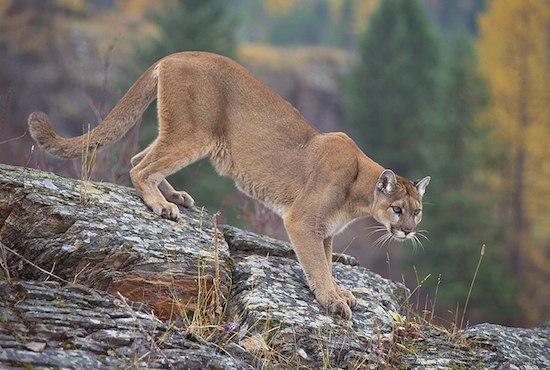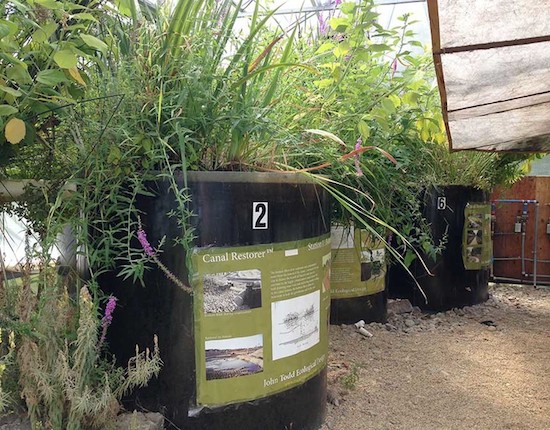
Long-suppressed film about Trump is now released
This press release, and links, are from my friend Libby Handros, regarding the long-suppressed documentary about the rise of Donald Trump that's now being released. You'll laugh and cry and get mad.
-- Robert Whitcomb
To watch the trailer: https://www.youtube.com/watch?v=7Qy75pRQKMU
To watch the film: www.trumpthemovie.com
DOCUMENTARY TRUMP SUPPRESSED TO BE RELEASED AFTER 25 YEARS
Trump: What’s the Deal? is an investigative documentary that was completed in 1991 --- but has never been seen by the national audience it was made for. Trump took great pains to suppress the film, threatening networks, distributors, and the filmmakers.
Producer Libby Handros says: “Now that Trump is running for president, it’s time for the American people to meet the real Donald and learn how he does business. The old Trump and the new Trump? They're the same Trump.”
“While much has been written on Donald, few know how he built his business,” she explains. “This documentary, which we made at great personal cost over three years, is filled with vivid and dramatic commentary by Trump insiders and prominent outside observers, who expose how he operated as he rose to national prominence.”
NOT “SELF-MADE”
Trump has claimed to be a self-made billionaire. That’s the first myth this documentary punctures. Trump used his father's money and government connections in addition to taxpayer largesse to begin his empire.
“Donald is neither self-made nor anything like a true small-government conservative,” Handros says. “His father made huge profits off Federal Housing Authority loans, and with the help of his father’s friends in government, Donald used the same techniques to build what fortune he actually has.”
TRUMP’S “WEALTH”
“We also launched one of the first investigations into Trump’s finances to reveal that he did not have nearly as much money as he says he did—a pattern of deception and aggrandizement that continues to this day,” Handros says. “Of all the damaging things we uncovered about Trump, that’s definitely the one that upsets him the most and led to him going after our film so hard.”
A HOST OF REVELATIONS
- Trump’s mob-connected contractor used illegal immigrant labor, provided with no safety equipment, to demolish the building that stood in the way of Trump’s first signature building: Trump Tower
- Trump hired a company that specialized in psychological attacks and blackmail to move tenants out of a building he wanted demolished.
- Trump was a major factor in the implosion of the United States Football League, and made a failed bid to “buy” Mike Tyson.
- Trump was in bed with the Mafia to buy the land for his first casino, Trump Plaza; he had ongoing associations with known mob figures and drug dealers in Atlantic City.
- Trump’s compulsion, then and now, to verbally abuse his wife and other family members as well as his colleagues and employees.
- Trump bad-mouthed three top executives of his Atlantic City casinos after their death in a company helicopter crash, blaming them for the near collapse of his empire.
- Trump’s manipulation and lying to the press… and their complicity in making him the force he is today.
- Trump’s long battle to move the airport farther away from his mansion in Palm Beach.
And much, much more…
The film was a production of The Deadline Company and produced by Al Levin, an award-winning documentary film producer, (now deceased) and Libby Handros. When the film’s executive producer Ned Schnurman passed away, Handros inherited the piece.
Trump: What’s the Deal? was recently called “an unforgettable investigation into the mating of commerce, corruption and celebrity in America's latest Gilded Age. It explodes the Trump mythology and his presidential campaign with it.’’
Please recycle us
 "Envoy (OTBF #10)'' (ash clay, acrylics, vintage bathroom scale top), by GWEN MURPHY, at the "Reincarnation'' show at Gallery in the Woods, Brattleboro, Vt., through Oct. 3
"Envoy (OTBF #10)'' (ash clay, acrylics, vintage bathroom scale top), by GWEN MURPHY, at the "Reincarnation'' show at Gallery in the Woods, Brattleboro, Vt., through Oct. 3
The gallery says:
"Reincarnation is more than a person or animal in whom a particular soul is believed to have been reborn—it's also a new version of something from the past. So in a sense, reincarnation and recycling are from similar foundations and the current exhibition at Gallery in the Woods explores this fundamental concept.''
Border-jumping cougars in N.E.
 ---- U.S. Fish and Wildlife Service photo
---- U.S. Fish and Wildlife Service photo
By BILL BETTY for ecoRI News
Sue Morse is an expert in natural history and one of the top wildlife trackers in North America. A recent article about her caught my attention. She believes the northern counties in Vermont, New Hampshire, Maine and New York would be ideal places for migrating cougars to reoccupy. These areas have what pumas need to survive: prey, open space and cover.
Morse, the founder of Keeping Track, believes that South Dakota cougars will spread to Manitoba and then to Ontario. Their descendants will eventually reach New England.
Besides Ontario, it’s likely the origins of these recruits to New England will be from Quebec and the Maritime Provinces. Mountain lions have already been identified there. Ontario has them as well, and Morse’s Manitoba trekkers will only add to the number of free-ranging North American genotype cougars now found in the province. Since all North American subspecies are virtually indistinguishable, this will hardly make any difference in their genetic makeup. And we’ll still call them eastern cougars no matter what anyone says.
The Ontario Puma Foundation has estimated the number of mountain lions at 550. One has been shot, another captured and about 24 confirmations have been made. Nearly 500 pieces of evidence have been recovered. Despite this, obstructionists continue to issue denials, suggesting that all of these cougars are males — hence no natural reproduction.
Studies by Marc Gauthier and Anne-Sophie Bertrand during the past two decades have confirmed 19 mountain lions in New Brunswick and Quebec. Gauthier’s latest estimate of an existing population in Quebec is 10 to 100 pumas. Three mountain lions have been killed in Quebec, including a lactating female cougar that was hit by a truck near the New Hampshire border.
Advocates who favor restocking the Northeast by releasing Western cats into the region reject any suggestion that natural reproduction is taking place in the East because it undermines their raison d'être.
Five Nova Scotia events would be categorized as “class II” discoveries elsewhere, including the 1986 incident where the Bower family carried an unconscious cougar to the side of the road — similar incidents have happened in New England. Nova Scotia officials have classified this knockdown as “virtually certain.”
In addition, a number of provincial employees, including the head of the province’s Endangered Species Division, have reported sightings or found evidence.
In short, what we have sitting across the Canadian border is Montana is an enormous tract four times the size of Texas where mountain lions are present in sufficient numbers to persist. If pumas can drift down here from Ontario, they can just as easily wander into northern New England from Quebec, New Brunswick and Nova Scotia.
Many dispersers from eastern Canada will not go very far and will end up establishing home ranges nearby, but a few of these young cats will head south and trickle into New England. For a mountain lion, the Northeast is a hop, skip and a jump from New Brunswick, Quebec, Nova Scotia and Ontario, as opposed to the Black Hills, which are 1,800 miles away and a 22-month cat walk.
Morse and I hold similar views on this subject. Eastern Canadian migration is, in fact, what I have been suggesting for the past decade. She believes this dispersal of cougars to New England and New York may take as long as 30 years for a breeding population to return. Judging by the number of reports recorded and the evidence collected in the Northeast, it’s my view that this migration has been ongoing for decades. It’s possible that we already have a number of mountain lions in New England with ancestry from Quebec or nearby provinces. Others here may be from Michigan and other Midwest states.
Northern New York, New Hampshire, Maine and Vermont have brutal winters, deep snow and the lowest deer population in the Northeast. If Morse believes that these are ideal are conditions for puma, then what about Spencer, Mass., Pomfret, Conn., or Stanford, N.Y.? They all have relatively moderate weather, less snow, more deer and plenty of open space. These places also have farms, gardens and orchards. It’s where people have chosen to live, and now mountain lions are being seen there.
Maurice Hornocker, the dean of mountain lion researchers, has a simple theory that explains the urban cougar phenomenon. He believes “people attract deer” by providing food for them in the form of flowers, vegetables, fruits trees and the like, and the “deer in turn attract cougars.” Hornocker told me that he thought cougars would “start showing up in New England.”
Much of the evidence confirming lions has been discovered near settled areas. In 2011, a cougar was road killed on the Merritt Parkway, which runs through Connecticut’s Fairfield County. A million people live there. So do 30,000 deer. Pumas have been discovered in places such as Greenwich, Conn. Cougars of the Valley, a nonprofit based in Canton, Conn., has enlisted the help of local houndsmen to locate cougars using specially trained scat dogs.
Michael Keveny at Clark University analyzed potential sites for cougar reoccupation in Massachusetts and concluded that many parts of the state had adequate habitat for pumas to survive. Some like Cape Cod and Bristol County, Mass., he considered the “best.” Sport hunting zones around Boston have kill totals that are five times higher than those from the state’s three western counties.
In New York State, it’s much of the same story. John Laundre has identified the Adirondacks as a potential site for cougar reoccupation. He believes that the area could support as many as 390 pumas. Western New York could support a lot more. Deer kills in some southern and western New York counties, for example, are more than 10 times higher than in the Adirondacks. With a million whitetails, New York is a fertile hunting ground for apex predators.
Maine’s highest deer harvest was reported in the Midcoast region, where many of the state’s residents live. Deer kills in these five districts far exceed those from the interior. In fact, 100 northern townships had zero sport hunting kills last year. One person who presumably is watching all of this is Nathan Webb, a carnivore specialist and mountain lion expert with Maine’s Department of Inland Fisheries & Wildlife, who was recruited from Alberta, Canada.
If Burlington, Vt., and Lake Placid, N.Y., are ideal habitat for mountain lions in Morse’s opinion, then the towns and cities in New England and Atlantic Canada surely meet the definition of cougar heaven. There have been reported sightings of large cats in Rhode Island. The urban/woodland interface on the outskirts of coastal settlements have everything that mountain lions need to survive: numerous whitetails, small mammals, song birds and waterfowl; adequate edge habitat in the form of fields and clearings; and abundant patches of woods and brush that provide excellent cover.
Ontario dispersers will show up in New England or New York at some point if they haven’t already. It’s possible some of the recruits that establish home ranges in the Northeast will be migrators from Nova Scotia, Quebec or New Brunswick. A few that pass through northern New England will probably continue on to more hospitable places such as New Milford, Conn., or Rochester, Mass. Their arrival will not go unnoticed by other members of their species.
Alan Rabinowitz, CEO of Panthera, lives in Connecticut. He believes there is a small population in the region that is maintaining itself and breeding. He doesn’t accept the explanation that every cougar wandering the edges of suburbia is a former pet that managed to escape. If he’s right, then some local mountain lions must be border jumpers that found their way to southern New England from their natal ranges in eastern Canada by following rivers or hugging the coast.
We should celebrate the arrival of mountain lions in New England. Vermont has done so by putting the face of a catamount on its license plate. The Massachusetts Division of Fisheries & Wildlife has taken a step in the right direction by stating that “a large cat would be safeguarded under state statute — a welcome visitor, like any other indigenous animal (other than threat situations).”
Acknowledgement of mountain lions in their jurisdictions will be the next step for all of the New England wildlife agencies. I’m not optimistic that it will happen soon. Some states have sent officers to tracking schools in Wyoming or exchanged personnel with western states to learn firsthand about pumas. Others have circled the wagons. Money and manpower are issues.
The odds of this apex predator surviving and reproducing along the coast in Maine, Connecticut and Rhode Island or in the rolling hills in southern Vermont or New Hampshire are much better than in the hinterlands of New England. Abundant resources make these locations a predator’s paradise. And you don’t have to be one of the puma illuminati to figure this out.
Bill Betty is a Richmond, R.I., resident.
Cool water, warm rocks, swift summers
"Sunday Afternoon'' (oil on canvas), by GAY FREEBORN, at the Patricia Ladd Carega Gallery, Center Sandwich, N.H.
One of my fondest memories is taking my young children to float on the White River or on the little lake spanned by the Floating Bridge, both in eastern Vermont, at this time of year.
It was for a week or two each summer for perhaps four years, until they wanted wider and wilder society, and high childhood was over.
--- Robert Whitcomb
Llewellyn King: Obama's nuclear-waste fiascos
When the Obama administration came into power, one of its first actions was to end work on the Yucca Mountain nuclear-waste repository, in Nevada. In so doing, it delivered a shuddering blow to the U.S. nuclear industry, trashing the project when it was nearly ready to open. The cost to taxpayers was about $15 billion.
Now the administration is going through the motions to suspend another costly nuclear-waste investment when it is about 67 percent complete. Money expended: $4.5 billion. Shutdown cost: $1 billion.
The object of its latest volte face is the Mixed Oxide Fuel Fabrication Facility (MFFF) on the Department of Energy’s Savannah River site in South Carolina. Work started on the facility in 2007, with a 2016 startup envisaged.
But unlike Yucca Mountain, few people outside of the nuclear industry know about the genesis and purpose of the MFFF project.
The project was initiated as a result of a 2000 agreement with the Russians, later amended, in which both countries agreed to dispose of no less than 34 metric tons of excess weapons-grade plutonium — the transuranic element that is the key component of a modern nuclear weapon, and remains radioactive essentially forever.
The DOE’s plan was for the facility to mix the plutonium with uranium to create a fuel for civil nuclear reactors to produce electricity. This recycling technology, developed in the United States originally, has been used in France since 1995.
The DOE has not yet taken a wrecking ball to the MFFF, but it is taking the first steps toward demolition. On June 25, the DOE issued a press release that the industry read as a precursor to a death warrant. The department announced that it was creating a “Red Team,” headed by Thom Mason, director of the Oak Ridge National Laboratory, in Oak Ridge, Tenn., to review “plutonium disposition options and make recommendations.”
The DOE statement said the team would “assess the MOX [mixed oxide] fuel approach, the downblending and disposal approach, and any other approaches the team deems feasible and cost effective.”
Industry sources say the choice is between the MOX approach and so-called downblending. In that application, the plutonium is not burned up but is spiked and mixed with a modifier that makes it unusable in weapons.
Then it would be disposed either in the Waste Isolation Pilot Plant, in Carlsbad, N.M., or in a new repository, if one is commissioned.
The American Association for the Advancement of Science has been pushing the downblending option. But it is using numbers that many believe to be extremely speculative. They come from a private consulting firm hired by the DOE, Aerospace Corporation.
The first number is that the life-cycle cost of the MFFF would be $30 billion, while the life-cycle cost for downblending would be only $9 billion. These numbers are contested by the contractor building the facility, a joint venture between the construction firm Chicago Bridge & Iron Co. and the French nuclear technology giant Areva. They point out that plutonium has never been downblended and that the WIPP in New Mexico has had its own problems.
On Feb. 5, 2014, the plant closed after a salt truck caught fire; there was an unrelated radiological release nine days later. The plant is still closed.
It is believed that Energy Secretary Ernest Moniz favors the MFFF approach as a permanent and scientifically attractive solution, rather than burying the plutonium in New Mexico or elsewhere. However, he may be overruled by the White House and the military chiefs, who know that they are going to have to raise money on a huge scale for nuclear weapons modernization, in light of the deteriorated relationship with Russia and China’s continuing military buildup.
If the MFFF is canceled, it will join a long list of nuclear projects that the government has ordered up and canceled later, often with a huge waste of public money. Another negative is the wastage of engineering talent. Families move to sites, buy houses and send their children to local schools. Then come the pink slips and years of demanding engineering effort are nixed by policy, politics and general incoherence.
Llewellyn King (lking@kingpublishing.com), host of White House Chronicle on PBS, is a longtime publisher, editor, columnist and international business consultant.
Stupidly blocking two badly needed hotel projects
The exasperation of trying to get things done in Providence! One hotel project, to replace a falling-down and ugly office building across the street from the Rhode Island Convention Center(!), is being held up because some people on the City Council don't want to offend one union; the other big union involved in the controversy desperately wants the hotel built, as do almost all Providence residents and visitors who know about the present dangerous eyesore. And the collapsing structure is hurting business in the neighborhood.
Another outrage is the idiotic and seemingly endless blocking by some rigid officials of hotel proposals that would finally fill the ugly and dusty or muddy (depending on the weather) long-vacant triangular lot near the U.S. District Courthouse and the downtown post office. The officials complain that the proposals are too "suburban.'' But the vacant lot shouts to people entering the heart of downtown DERELICTION!
For that matter this barren mini-steppe lot reminds us of the back of abandoned big-box store in the suburbs.
Please, please officials, drop your political alliances and aesthetic obsessions and get building going again in downtown Providence, for everyone's good.
Thank God there's some movement on developing the Route 195 relocation land.
-- Robert Whitcomb
Cleaning up the Blackstone River naturally
Living Systems Laboratory built in 2013 for progress and profits cleans 10,000 gallons of river water daily.
BY CATHERINE SENGEL, for ecoRI News
SOUTH GRAFTON, Mass.
The heads of a few dozen turtles bob up from the waters surrounding a floating island along a verdant stretch of the Blackstone River. Five years ago, this expanse beside the Blackstone Canal and below the Fisherville Pond Dam was a dead zone, devoid of aquatic life.
But thanks to an experimental Living Systems Laboratory built in 2013 on the former site of the historic Fisherville Mill, 10,000 gallons of water are cleaned daily of the contaminants that once choked all living matter. By reintroducing the biological diversity once part of the ecosystem, the operation is restoring vitality to the river at a pace a thousand times faster than nature.
In addition, owner and developer Gene Bernat hopes it will offer an unparalleled education on our relationship with our environment.
“All of the different biological kingdoms that we employ here provide natural solutions to more than 200 years of incremental problems,” Bernat said during a recent tour of this lab. “It’s a visual roadmap of how we get from an extractive economy to a sustainable economy, and the premier experience in ecological literacy that you can find in the Northeast.”
Part of a string of mill villages in the valleys below the river’s headwaters in Worcester, Fisherville was home to one of the largest mills on the Blackstone River, supplying wool to the world from the early 1700s. In the mid-19th Century, a network of 48 granite locks and steps channeled flow along the Blackstone Canal, allowing the visionaries of America’s Industrial Revolution to power their mills and move goods in and out between Worcester and Providence.
Over the centuries, the river went from supplying food and canoe transport between communities for Native Americans and early settlers to providing energy for manufacturing and finally a convenient disposal place for waste.
In 1999, the 300,000-square-foot Fisherville Mill burned, sending deposits of asbestos to coat yards as far away as Hopedale and adding to an already toxic legacy. When talk turned to cleaning up the remaining pile of mill rubble after eight years, Bernat’s Fisherville Redevelopment Co. teamed with the town of Grafton to apply lessons learned elsewhere about resource restoration combined with an economic incentive.
The land would be cleared for Mill Villages Park, a development of 240 residential units with 60,000 square feet of commercial space. Site remediation was just finishing when the market collapse put a halt to building, but work on the Living Systems Laboratory moved forward.
Bernat, from three generations of textile makers, grew up dividing his summers between work in the Bernat yarn mill in Uxbridge and the woods of the family farm in Grafton. His time in forestry had sparked an interest in natural systems and resource management. To his reasoning, there was no question that the property would be a long-term durable asset for the Blackstone Valley and the community, with or without housing and shops.
Situated within the Blackstone River Valley National Heritage Corridor, the Fisherville Mill site is on one of largest existing water areas on the Blackstone Canal, with remnants of historic locks, a 200-foot-wide step dam and a continuous perennial waterfall from days of industrial development. Fisherville Pond is one of the last mill ponds on the river, and a premier migratory waterfowl nesting site.
In addition to large expanses of mostly untouched floodplain, the surrounding area includes still-intact mill villages, including mill housing. Two other yarn mills within a quarter mile, in Saundersville and Farnumsville, put Mill Villages Park and Pavilion at their center.
Rather than dwell on impediments to park progress, Bernat began to consider the entire area as a living, teaching landscape.
A consortium of area universities, including Brown, Clark, Tufts and Worcester Polytechnical Institute, along with the Blackstone Headwaters Coalition, Blackstone Heritage Corridor Coalition and Mass Audubon, joined Bernat to launch the Living Systems Laboratory. John Todd Ecological Design (JTED), a global pioneer in the use of natural systems to remove contaminants from water, was enlisted to help customize operations to the challenge at hand.
On the premise that one organism’s waste is another organism’s food source, JTED used a combination of tanks and aquatic cells in its bioremediation to mimic natural processes.
Bins of wood pellets and water support the growth of fungi that consume petroleum hydrocarbons.
In a temporary, riverside greenhouse, water from the Blackstone is pumped through a series of bins. Filled with wood pellets and water, they support growth of a variety of fungi that consume oil residues.
From there, the water moves through a progression of six tanks, or “aquatic cells,” where native plants, shrubs and trees hang on fiberglass racks, roots reaching down to support worlds of algae, zooplankton and other microorganism which in turn nourish snails, clams and fish.
“By introducing the contaminants, we’re telling nature to try and use them,” Bernat said.
The older the system, the more mature and diverse the biology, the better it is at treating waste products, according to Bernat. Species purposely excluded in construction of the ecological incubator introduced themselves into bins and tanks, he noted, proving that every species has a purpose in nature.
The concept is new and radical and has enormous potential. The first year of operation saw a more than 95 percent drop in petroleum hydrocarbons in water samples from input to outflow back into the river. Water clean enough to drink is now packed with beneficial organisms and life forms that digest oils, dyes and contaminants, and returned to the Blackstone River.
Canal restorers made of bamboo and local vegetation float on the Blackstone, supporting ecosystems once abundant in the river.
Taken together, bins and tanks create a circulating loop — a stream within the stream in which water is purified at a rate of 10,000 gallons a day and the canal is re-seeded with healthy ecology. In the river, constructed bamboo “canal restorers” — some surrounded by oil booms to collect slick — float upstream of an old granite bridge collecting and consuming additional pollutants.
“Everything that occurs in here in this greenhouse is happening in the natural world around us without our intervention,” Bernat said. “But with our intervention, we make it over a thousand times as effective in cleaning up contaminants as the natural world does itself.”
The site has already received both local and international attention for its community-designed Mill Villages Park and the chemical-free remediation. Beyond the value of an ecological wastewater treatment system, Bernat champions the educational potential of the operation.
From the obvious to the microscopic, there are centuries of historical, cultural and biological lessons on the past, present and future for levels from preschool to Ph.D.
Students from Worcester Tech are duplicating the process in a greenhouse they built at their high school to study bioremediation. Senior fellows, researchers and policymakers from the University of Rhode Island Coastal Institute visited to learn about the system’s EcoMachine™ design.
In December 2014, the town was awarded a $10,000 grant by the Blackstone River Valley National Heritage Corridor for the Fisherville Mill Redevelopment site. The money will be used to create a teaching landscape, build a more permanent greenhouse, and develop educational materials and programs focused on the ecology and industrial history of the Blackstone River Valley.
Students from the Conway School of Landscape Design created a vision plan for the site that will, in time, include nature paths, a boat launch, an amphitheater, exhibit space and a model of cross-discipline education. Plants are being introduced into aquatic labs in the hope that flowers can be grown and sold commercially as an added economic component.
“What we learn here and teach here is applicable to the environment no matter where,” Bernat said. “Rather than a scholastic understanding of how things work, you should be able to walk through the site and really begin to grasp the miracles of nature and how we help that process or how we’ve damaged that process through our past activities.
“If you look at rivers almost without exception in the industrialized world, they really are the sewer system of our society.”
One of the many lessons the river offers is that there is no such thing as “away” when it comes to waste. Whether buried in a landfill or dumped in a river to be carried out to Narragansett Bay and beyond, that garbage still exists along with its long-term consequences.
“There’s an intimate dynamic between humanity and our environment ... we are all canaries in a coal mine,” Bernat said. “We see animals dying and habitat being destroyed and we just think it’s the price of progress.”
The Living Systems Laboratory is a vision for progress and profits without environmental cost, according to Bernat. He’s excited to announce that frogs finally returned to the river this year.
“If we’re going to survive, we have to start looking at water in a completely different way,” he said. “The park vastly improved South Grafton, and now we have the potential to do so much more.”
David Warsh: Scott Walker: Political asset stripper
SOMERVILLE, Mass..
This appeared in economicprincipals.com last spring.
Republican Party business interests and centrists have rallied around Jeb Bush. Tea Party conservatives so far seem to prefer Wisconsin Gov. Scott Walker to the rest of the list of would-be contenders – Chris Christie, Ted Cruz, Mike Huckabee, Rand Paul, Rick Perry, Marco Rubio, and Rick Santorum. {Editor's note: This was written before the recent rise of Donald Trump.}
The first state primary is still months away. But to understand the appeal of Bush and Walker to their respective constituencies, it helps to know something about the situation on the ground in Wisconsin.
Walker, 47, who rose from state legislator in 1993 to county executive for Milwaukee to governor, achieved national prominence in 2011 when he successfully campaigned to strip the state’s public unions of most of their collective bargaining rights. He survived a recall election and, in 2014, won a second term.
Recently he picked a new fight with organized labor when he said he would sign “right-to-work” legislation on the verge of passage in the Republican-led legislature. The measure would deprive unions of their right to charge non-member workers the equivalent of dues.
Robert Samuels, of The Washington Post, spent time in the state recently and found the public unions reeling. Describing an ill-attended meeting in a union hall in a small town in central Wisconsin, his report began:
The anti-union law passed here four years ago, which made Gov. Scott Walker a national Republican star and a possible presidential candidate, has turned out to be even more transformative than many had predicted.
Walker had vowed that union power would shrink, workers would be judged on their merits, and local governments would save money. Unions had warned that workers would lose benefits and be forced to take on second jobs or find new careers.
Many of those changes came to pass, but the once-thriving public sector unions were not just shrunken — they were crippled….
The state branch of the National Education Association, once 100,000 strong, has seen its membership drop by a third. The American Federation of Teachers, which organized in the college system, saw a 50 percent decline. The 70,000-person membership in the state employees union has fallen by 70 percent.
The story artfully hints at the disparities in job security, wages, and benefits that exist between union and non-union jobs. Statistics are hard to come by, but where government workers 50 years ago routinely accepted lower levels of compensation in return for greater job security and reliable pension benefits, anecdotal evidence suggests that government salaries in recent decades have tended to equal and often surpass comparable private-sector employment opportunities.
Samuels writes,
While some union members have been energized by the fight, they say they notice a new, more vocal animosity toward them. It has been particularly pronounced in rural areas, where public-sector jobs were some of the most prized gigs in town.
In King [Wis], population 1,700, [union steward Terry] Magnant said she couldn’t change a sign at the union hall without someone giving her the finger. Farther west, in Stanley, prison workers said they ditched their favorite pizza pub because the owner stood by while other customers called them “leeches.”
In Reedsburg, that tension surprised Ginny Bourgeois, 52, who clerks at a local Kwik Trip. The community had always been divided, defined as much by the factories manufacturing car parts as it was by cornfields now blanketed in snow. Still, it was a place where the community got together for spaghetti and corn feeds and filled bleachers to watch the Reedsburg Beavers play. Now, she said, people were fighting over politics at gas stations.
Still, she felt unions needed to sacrifice.
“Everyone knows teachers’ insurance was some of the best you could get,” Bourgeois added. “They do fairly well around here, and they do a good job teaching. But everyone in this town has had to tighten their belts. They should too.”
Judy Brey, a 58-year-old speech therapist who taught in the community for 22 years, said such sentiment hurt teachers’ morale. She said she grew up admiring her dad, who put six children through college on his union-supported job as a forester. “I don’t make a lot, but we’ll be okay with retirement, ” she said he told her. That, she was taught, was the reward for public service in Wisconsin.
“Now I’m always nervous that everyone will think they’re moochers,” Brey said. “That I’m a moocher.”
The history of the union movement can only be understood in the larger context of American business in the 20th Century – but it seldom is, Even the broad outlines of the story of American business are not well understood.
Alfred Chandler, the great historian of business, who spent his last 40 years at Harvard Business School, worked tirelessly to demonstrate the importance for economic growth of giant corporations – not just in the US, but in Britain, Europe and Japan, too. First in Structure and Strategy: Chapters in the History of American Industrial Enterprise (MIT, 1962), then in The Visible Hand: The Managerial Revolution in American Business, (Harvard, 1977) and finally in Scale and Scope: The Dynamics of Industrial Capitalism (Harvard, 1990), Chandler described and analyzed the stability that arose when industries became oligopolies, markets dominated by a handful of first-movers, each with substantial power to set prices, all determined to compete on other grounds.
But when the time came for an international conference in 1994 to celebrate what was clearly a triumph of empirical economics, Big Business and the Wealth of Nations (Cambridge, 1997), European unions were barely mentioned. and American unions had no place at all in the index. Moreover, it was already apparent that market conditions had changed dramatically since the 1970s – that the twin forces of innovation and globalization were undermining familiar arrangements of enterprise that had begun taking shape more than a hundred years before.
No comparable economic history of the labor movement exists, though Atlantic Crossings: Social Politics in a Progressive Age (Harvard, 1998), by Daniel T. Rodgers, of Princeton University, made a very good start. Steven Greenhouse, for 19 years a labor reporter for The NewYork Times, contributed The Big Squeeze: Tough Times for the American Worker (Knopf, 2008) before he retired earlier this year to begin another book. In the mid-1950s, 35 percent of American workers belonged to unions, Greenhouse writes; in 2008, the number was 12.1 percent and declining, just 7.5 percent in private sector unions -- the lowest proportion since 1901. But those numbers come toward the end of the book, not the beginning.
The story of the last 40 years has been one of pell-mell corporate restructuring in industrial economies and newly industrializing ones around the world. Call it what you like: deregulation, a Big Bang, the Leap Outward, Perestroika. Private unions have been intimately affected by the turmoil, public unions somewhat less so.
In the US, the Employment Retirement Security Act of 1974, known as ERISA, spelled out rules under which companies could legally freeze their pension plans. Few have hesitated to do so.
But no such measure was undertaken for public pensions. As Mary Williams Walsh, the dean of pension reporters, wrote recently inThe New York Times, cracks have started to appear in the legal foundation of government pensions, the doctrine of “vested rights:”
First in Detroit, then in Stockton, Calif., now in New Jersey, judges and other top officials are challenging the widespread belief that public pensions are untouchable.
Walker is clearly part of this evolution. He should be seen to have begun doing something that needs to be done – albeit in an especially combative way. Just as corporate restructuring called forth a gallery of types over the years – entrepreneurial geniuses and private equity kings, roll-up artists and spin-off wizards, merger mavens and makeover masters – so the restructuring of labor markets eventually will be seen to have produced a few basic sorts of innovative leaders. Walker is one such rxample..
Among corporate chieftains, the lowest rung is reserved for those known as asset-strippers, a term of no great precision, except that the community knows one when it sees one — raiders who borrow heavily and then sell off assets to pay down debt with no clearer goal than the accumulation of riches. My hunch is that is the category in which Walker will come to be placed – a political asset-stripper of uncommon ambition, who sought to convert a policy of smug confrontation to personal gain.
It’s Wisconsin, a state of sharply divergent traditions, not Indiana or Michigan; maybe it could not have been done any other way. But Scott Walker is very unlikely to become the Republican nominee, much less president of the United States.
David Warsh, proprietor of economicprincipals.com, is a longtime economic historian and financial journalist.
.
Summer hiatus
Early this morning, the cool, damp air and an unexpectedly dim sun made it feel a little like September. Nice, but a little sad.
In summer white
"A Study in White'' (oil on canvas), by CHARLES WEBSTER HAWTHORNE (1872-1930), in the show "American Impressionism: The Lure of the Artists' Colony,'' at the D'Amour Museum of Fine Arts, Springfield, Mass, though Oct. 25.
New England, especially the coast and mountains, had lots of artist colonies from the Civil War on. It probably still does but doesn't seem to producing as many famous artists as it did in Victorian and Edwardian times. And most artists can't afford to live in the scenic coastal towns to which they used to flock, Even the Berkshires have gotten too pricey.
Why do cities waste public money on stadiums?
This Pacific Standard magazine article/investigation asks: "Despite every number suggesting they shouldn't, why do American cities keep building sports stadiums funded with public money?"
The money helps impoverish essential public services and is a huge wealth transfer from poorer people to the rich.
Gets even more violent after dark
 "Sunset on the Pond'' (oil stick on braced panel), by NAN HESS FELDMAN, in the "Hydration'' show at Alpers Fine Art, Andover, Mass.
"Sunset on the Pond'' (oil stick on braced panel), by NAN HESS FELDMAN, in the "Hydration'' show at Alpers Fine Art, Andover, Mass.
My parents for a few years lived on a pond they shared with a neighbor that was kept at slightly under 10 acres. More than 10 acres meant that they would have to give the public access to it under the colonial era "Great Pond'' rule.
They controlled the size of the pond via a little dam, which created a cute little waterfall. If they had chosen, they could have flooded a road downstream by pulling up a wooden slat. They did think that would be fun to try but never got around to it.
While my parents seemed to like the pond, with its canoe, little swimming raft and large population of bass, I always found it smelled too much of decaying organic material and iron (they used to mine a little nearby in colonial days) and hosted far too many mosquitoes that in an earlier time might have given you malaria.
I missed the usually antiseptic smell of the ocean at their previous place on a hill above the shore, where, unlike on the pond, hemmed in by tall trees and thick brush, there was almost always a breeze -- indeed, often a gale.
Some of the water in the pond flowed in a little stream from a cranberry bog. God knows what sort of pesticides were used there in pre-EPA days. But whatever they used wasn't enough to cut into the bass or snapping-turtle population as the brook flowed into the pond via a swamp that recalled the movie The African Queen, from which came one of the famous lines assigned to Humphrey Bogart: "One thing in the world I hate: leeches. Filthy little devils.''
Everything seemed so much cleaner in the winter, though the remoteness of the house and pond led one roofer to ask my mother if they had bought the land from Lewis and Clark.
Fairly soon after my father died suddenly we sold the place, unfortunately during a real-estate slump.
--- Robert Whitcomb










